LOS ANGELES––In recent years Ruby Neri has become increasingly recognized for her ceramic vessels featuring figurative female forms. Almost always based on the idea of the vessel, these works are notable for the physicality of their construction and the intensity of their glazes, which are often applied using an airbrush. This exhibition at David Kordansky Gallery (May 15 – June 15, 2019) featured a group of some of the largest and most complex objects that Neri has made to date.
Neri arrived at what has become a signature typology by synthesizing a group of influences, including the Bay Area Figurative Movement, street art, ancient fertility figures, and more recent currents in ceramic-based contemporary art. The work is defined by its psychologically and sexually charged content and its bawdy feminism. Several of the new sculptures are composed of numerous figures that differ greatly in size. Smaller women are held, supported by, and wrapped around bigger ones, suggesting relationships in which one dominates the others. The ambiguity and playfulness of these tableaux adds a layer of narrative richness to the works.
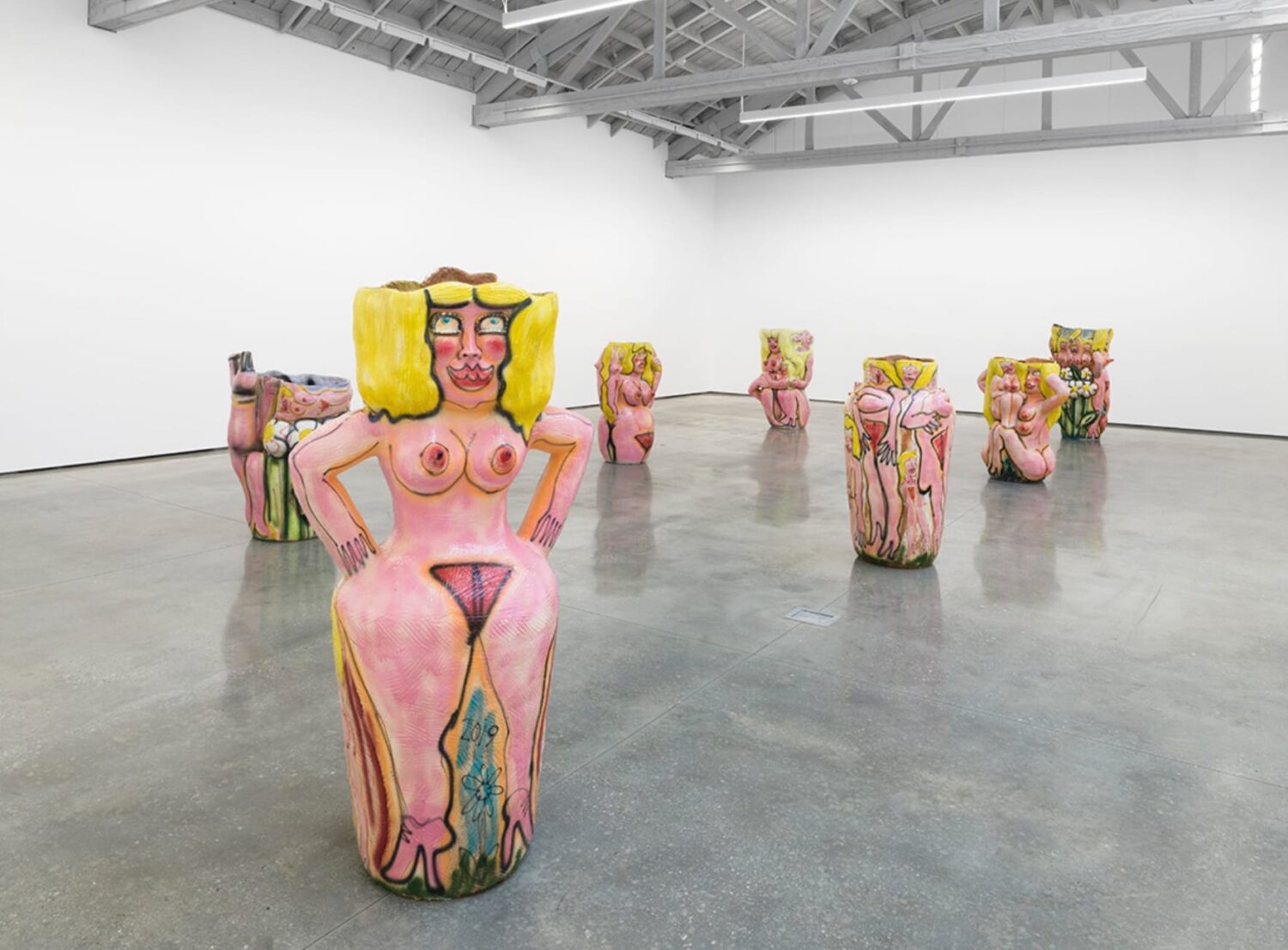
The figures all share certain basic characteristics. Blonde, with dramatically full lips, voluptuous bodies, and revealed genitalia, whose most prominent feature might in fact be her disarmingly frank facial expression. Enraptured, knowing, bemused, the gaze she returns to the viewer suggests that the complexity of her relationships–with her own interiority.
The aura of confidence that animates the sculptures is due in no small part to the physical solidity of clay and Neri’s handling of it. Fusing elements that can be read as handles, for instance, with the limbs of the figures or their ropes of yellow hair, she builds hybridized objects that literalize the implied corporeality of the vessel. The scale of these works gives them architectural presence as well, generating comparisons to archaic totems constructed by a matriarchal society. In some cases, bulbous protrusions on their sides contain apertures that permit visual access to their interiors.
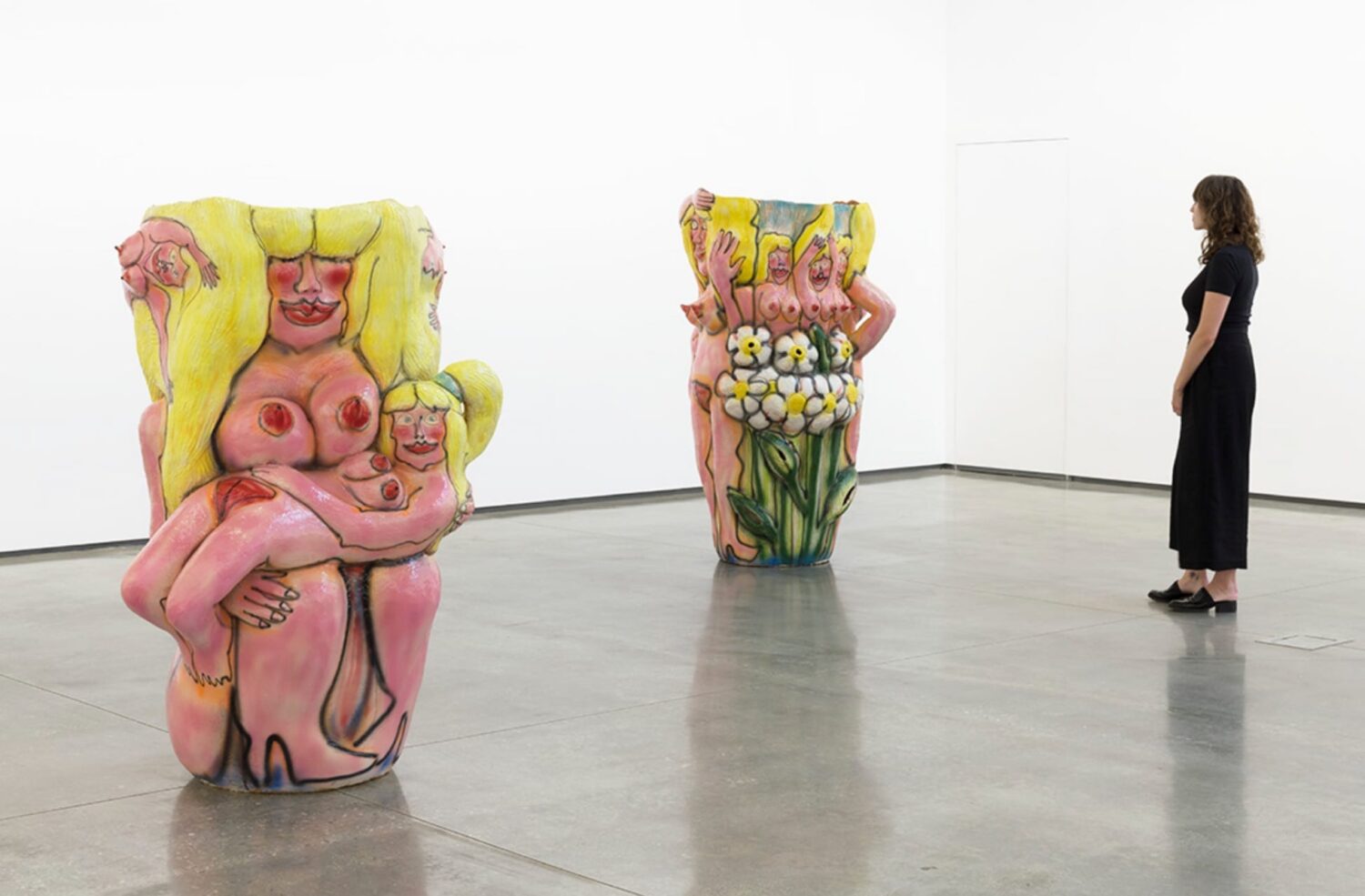
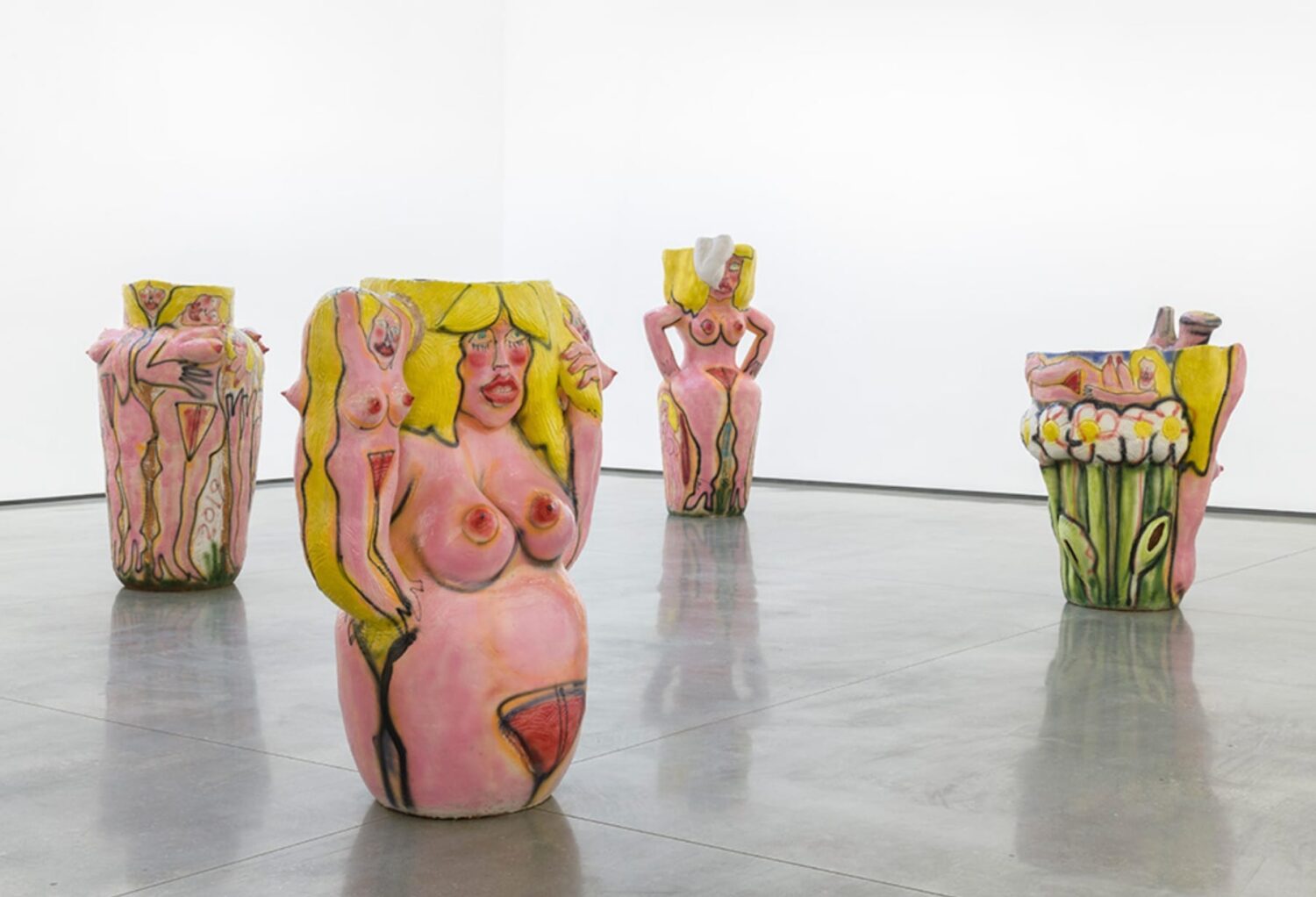
As Neri raises the stakes on the sculptural intricacy of her project–no small feat given the challenges involved with building and firing ceramic objects of this size–she also continues to experiment with her glazes. The pink flesh tones have become more and more intense over the last few years, that enhances the work’s dialogue with pop references. The fluidity of the black lines Neri uses to outline the figures take on a life of their own as they snake around. Red and deep pink, applied in airbrushed bursts, bring out the women’s lips and blushing cheeks in a manner that evokes the presence of filling blood vessels just beneath skin.
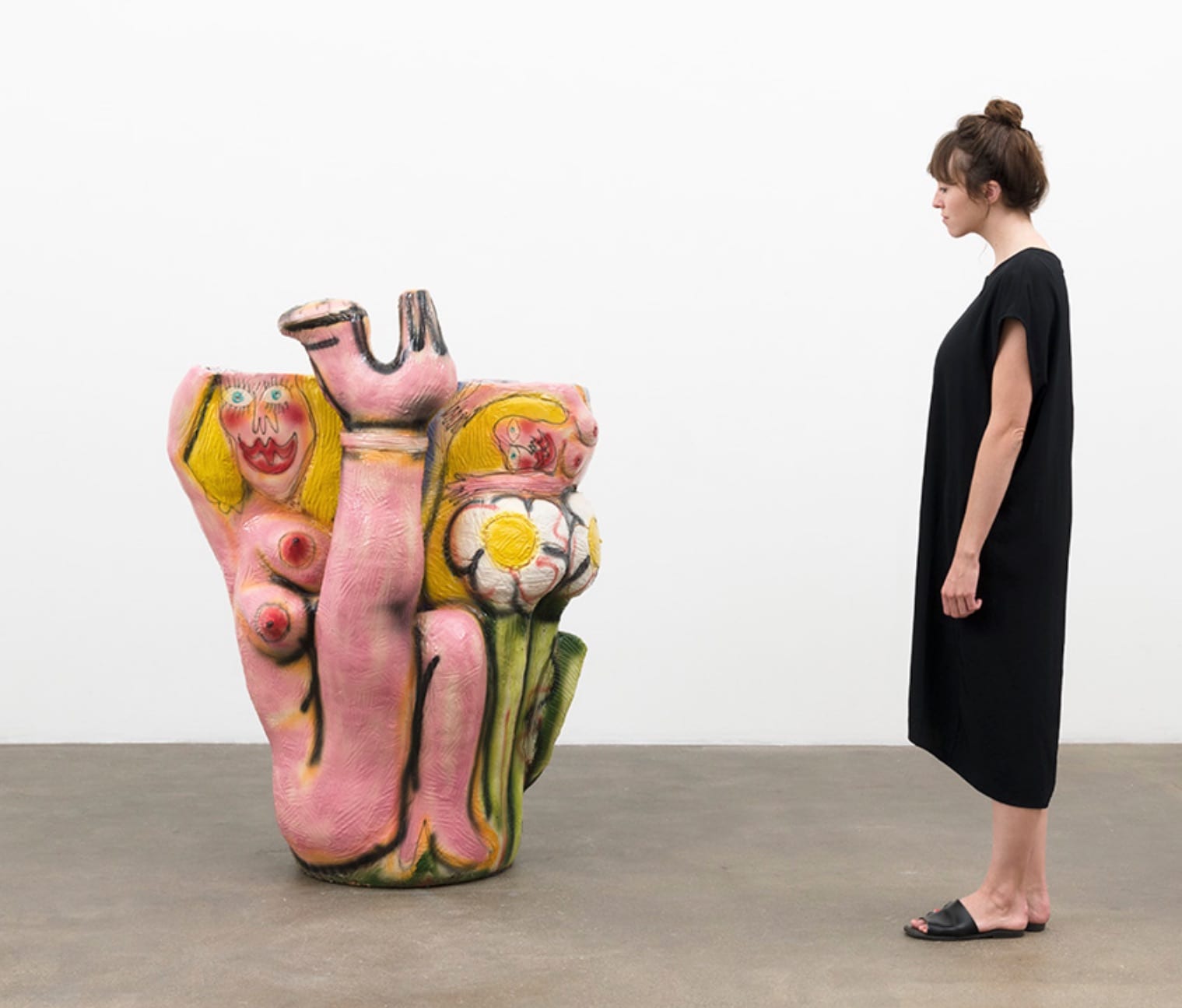
Each of these factors lead the eye to engage the many different kinds of textures that animate the surfaces of Neri’s work, which play both with and against the grain of her imagery. The scoring that covers the majority of the sculptures’ “skin” recalls ancient graffiti or the gestural abstraction of postwar painting. In some sections it also takes on representational force when used to depict thick strands of hair that cascade down the figures’ backs, and occasionally braid them together. Indeed, the figures are always linked in some way, whether literally or metaphorically. Even in cases when a work is composed of a single monumental character, her sisters in the other objects embody her dreams, fantasies, and projections. Perhaps paradoxically, as Neri’s sculptures grow in size and her vision becomes more ambitious, her art becomes more personal, striking deeper chords of intimacy, vulnerability, and humanity.
View Exhibition at the David Kordansky Gallery here.
Text (abbreviated) Courtesy of the Gallery.
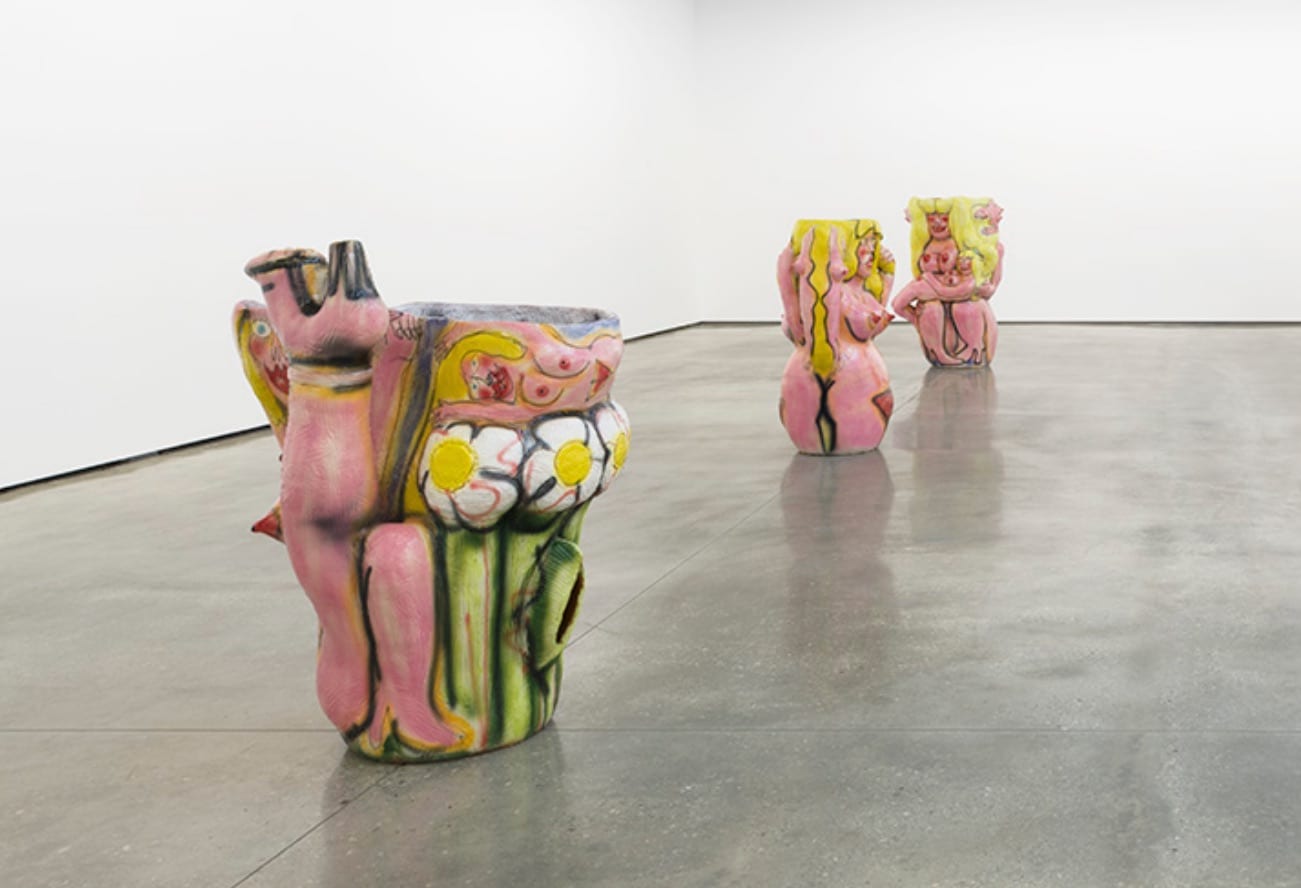
Love or loathe Ruby Neri’s exhibition from the world of contemporary ceramic art and contemporary ceramics? Share your thoughts in the comments below.
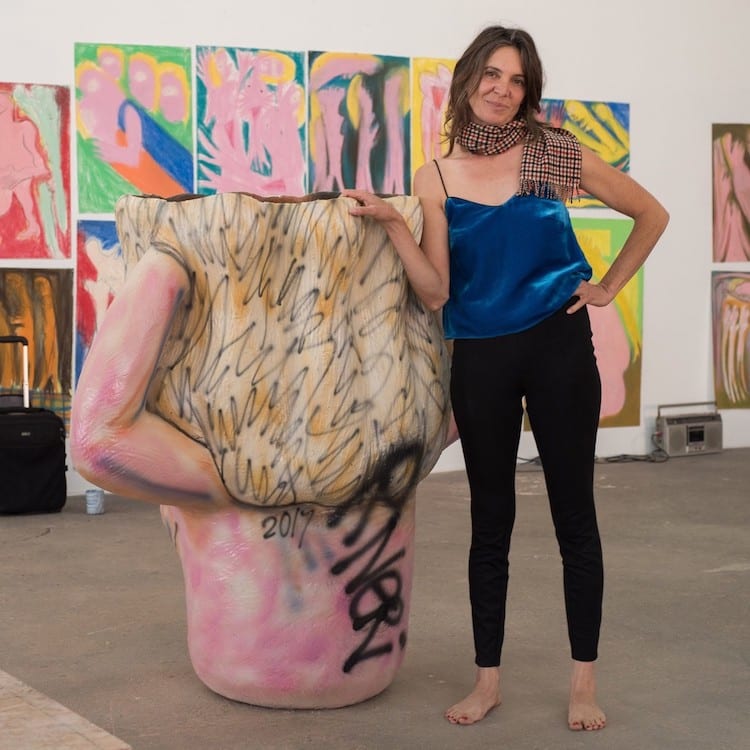
Add your valued opinion to this post.